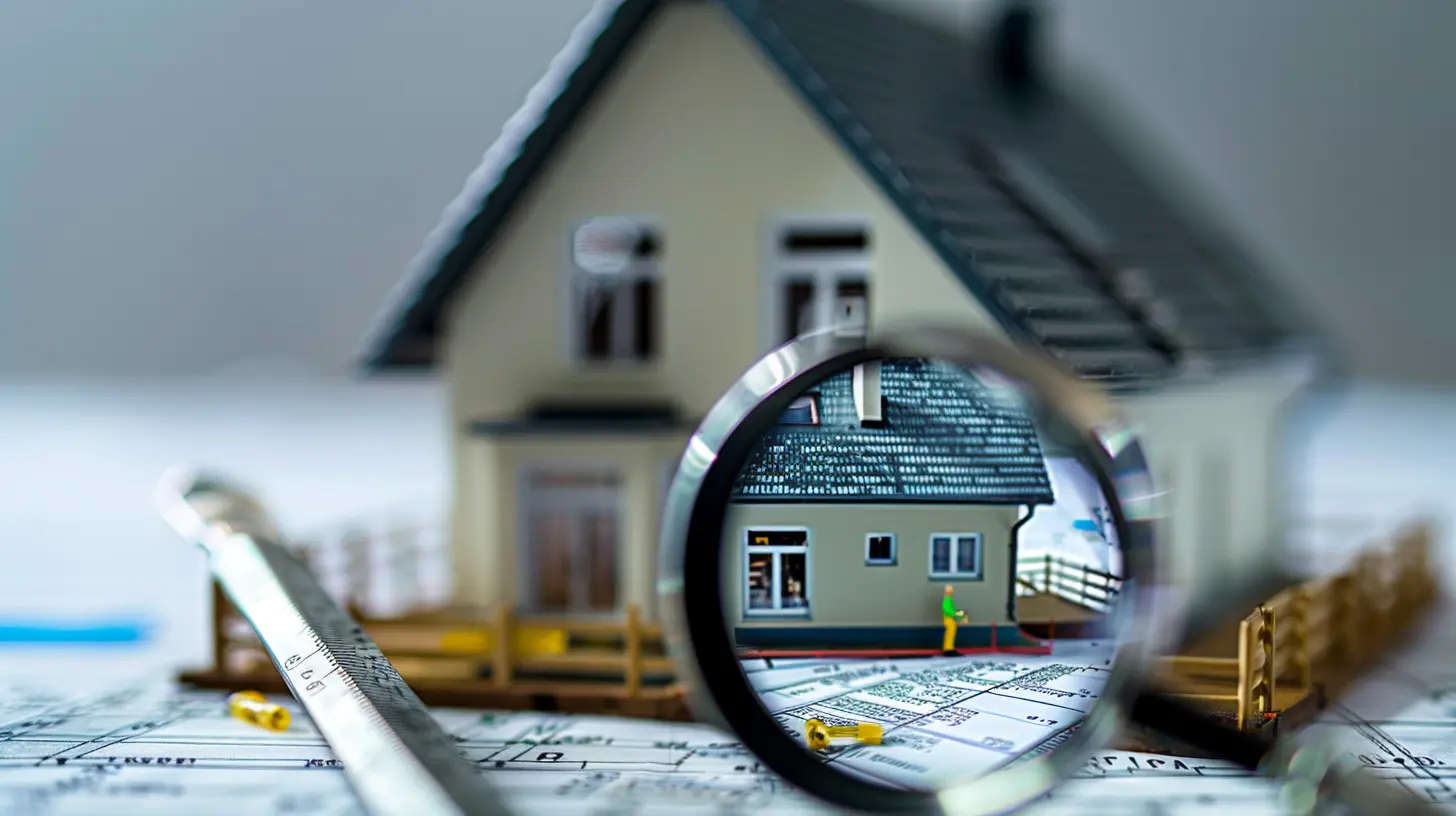Understanding Radon Testing and Home Inspections
29 July 2025
When you're buying a home, the list of things to think about is practically endless. Price, neighborhood, school district, appliances, square footage—the works. But there’s one often-overlooked factor that could silently impact your family’s health and your home's long-term value: radon. Yep, radon. That invisible, odorless gas most people don’t even realize they should be testing for during a home inspection.
Let’s face it—home buying is stressful enough. But toss in the word "radiation" (because that’s kind of what radon is), and suddenly, things start to feel a little scary. Don't panic, though. Understanding radon testing and its role in home inspections isn’t as complicated as it sounds. In fact, taking the time to get informed can save you from giant headaches later on.
In this guide, we're breaking it all down in plain English. What is radon? Why should you care? What happens during radon testing? And how does it fit into the broader picture of home inspections? We've got you covered.
What Is Radon and Why Should You Care?
Let’s start with a quick science refresher. Radon is a naturally occurring radioactive gas that comes from the breakdown of uranium in the soil. It seeps up through the ground and can enter your home through cracks in the foundation, walls, and floors. And here's the kicker—it's completely invisible and odorless.So, why is it a big deal? According to the EPA, radon is the second leading cause of lung cancer in the United States, right after smoking. Yikes. But unlike smoking, radon exposure doesn't come with a warning label or smoke-filled rooms. You could be breathing it in every day and not even know it.
That's why testing is so important. It’s not about being paranoid; it’s about being proactive. Think of radon like that silent ninja in a horror movie—just because you can’t see it doesn't mean it’s not there.
What Exactly Is Radon Testing?
Alright, now that we know what radon is, let’s talk about what radon testing actually involves. There are two main types of radon tests: short-term and long-term.- Short-Term Tests typically last anywhere from 2-7 days. These are the most common type used during real estate transactions because buyers and sellers usually don't have months to wait.
- Long-Term Tests, on the other hand, run for more than 90 days. These provide a better overall average of your home’s radon levels, especially if the house has seasonal variations.
Both tests are designed to measure how much radon is present in a certain space—usually the lowest livable part of the home like the basement.
The results are measured in picocuries per liter (pCi/L). If your home has a reading of 4.0 pCi/L or higher, the EPA recommends taking steps to reduce the radon level.
How Is Radon Testing Done During a Home Inspection?
Good question. If you're buying a home, it’s super easy to add radon testing to your standard home inspection. Most qualified home inspectors can handle this for you as an add-on service.Here’s a quick overview of what that looks like:
1. Placement of Testing Device: The inspector will place a small radon detector in the lowest usable level of the home—usually the basement or first floor.
2. Closed-House Conditions: You’ll be asked to keep doors and windows closed for 12 hours before the test and during the 48-hour testing period to ensure accurate readings.
3. Collection and Reporting: After the designated time, the test is collected, sent to a lab (if it’s not a digital reader), and results are typically ready within a few days.
It’s a simple process, but the impact it can have on your decision-making is huge. You wouldn’t buy a car without checking under the hood, so why would you invest in a house without making sure the air you're breathing is safe?
What Happens If Radon Levels Are High?
So let’s say you do the test and the radon levels come back higher than 4.0 pCi/L. Now what?Don’t freak out. High radon levels aren’t a deal-breaker, especially not if you’re in love with the house. Radon is fixable. In fact, reducing radon levels is easier and more affordable than you might think.
Radon Mitigation Systems
These systems are designed to suck radon out of your home and safely vent it outside before it can build up to dangerous levels indoors. A typical system includes:- A vent pipe system
- A fan to pull radon from beneath the home
- Sealing of cracks in floors and foundations
The average cost? Between $800 to $1,500, depending on your home’s layout. It’s a small price to pay for long-term peace of mind and added safety.
Why Every Home Inspection Should Include Radon Testing
Still thinking about skipping radon testing? Let me stop you right there.Home inspections are about protecting yourself from surprises—structural issues, water damage, outdated wiring, etc. Radon testing should be part of that protection strategy.
Here’s why:
- Health: Lung cancer is no joke. Catching high radon levels before you move in gives you the power to deal with it before it becomes a problem.
- Negotiating Power: If the test comes back high, you can request the seller address it or lower the price to compensate.
- Long-Term Value: A home with a radon mitigation system is actually more marketable. Future buyers will thank you for the foresight.
Skipping radon testing is like ignoring a blinking check engine light—maybe it’s fine, or maybe it’s not. Why take the risk?
Common Myths About Radon Testing
Let’s bust a few myths while we’re at it, shall we?"New homes don’t need radon testing"
False. Radon doesn’t care how shiny your new countertops are. In fact, newer homes are often more airtight, which can actually trap radon more easily."My neighbor tested their home and had low levels, so mine will too."
Nope. Radon levels can vary drastically even between homes that are right next door. Soil conditions, house construction, and ventilation all play a role."Radon isn’t a problem in my area."
Wrong again. While radon concentrations can vary by region, it’s been found in all 50 states. Just because you're not in a "high-risk" zone doesn’t mean you're safe.How Radon Testing Fits Into the Bigger Picture of Home Inspections
A home inspection is like a health check-up for a house. You're looking at all the systems—plumbing, electrical, HVAC, roof, crawlspaces—the whole nine yards. Radon testing is just one piece of that very important puzzle.A thorough home inspection gives you:
- Leverage in negotiation
- Confidence in your purchase
- Insight on future maintenance
- A reality check on what you're getting into
When you add radon testing to the mix, you turn that already-powerful inspection into something even more robust. It's like going from black and white to full color.
Final Thoughts: Don’t Cut Corners, Test for Radon
At the end of the day, your home is your sanctuary. It's where you'll laugh, cry, raise a family, or maybe just cuddle with your dog while eating pizza in your pajamas. Whatever your lifestyle, you want it to be safe—and air quality is a massive part of that.Radon testing during your home inspection isn’t just another box to check. It’s a smart, responsible move that protects your health, your finances, and your future.
So, when it comes to radon and home inspections, don’t treat it like a minor detail. Treat it with the respect it deserves. Trust me, future-you will be grateful.
FAQs About Radon and Home Inspections
Q: Should I test for radon if I’m selling my home?Absolutely! Doing so helps you get ahead of any potential issues and makes your home more attractive to cautious buyers.
Q: Can I do a radon test myself?
Yes, DIY kits are available, but for real estate transactions, it's best to have a certified professional do the testing to ensure accuracy and validity.
Q: Is radon only a problem in basements?
Nope. While radon levels tend to be higher in lower levels, it can seep throughout the house—so it affects everyone, not just the person doing laundry downstairs.
all images in this post were generated using AI tools
Category:
Home InspectionsAuthor:

Mateo Hines
Discussion
rate this article
1 comments
Selina McMahon
Radon testing is a crucial aspect of home inspections that should not be overlooked. High radon levels pose serious health risks. Homebuyers are encouraged to prioritize this test, ensuring peace of mind and safety for their families. Regular testing and proper ventilation can mitigate radon exposure effectively.
August 19, 2025 at 4:20 AM

Mateo Hines
Absolutely! Radon testing is essential for safeguarding health in homes. It’s important for homebuyers to prioritize this to ensure a safe living environment. Regular testing and ventilation are key to managing radon levels effectively.


